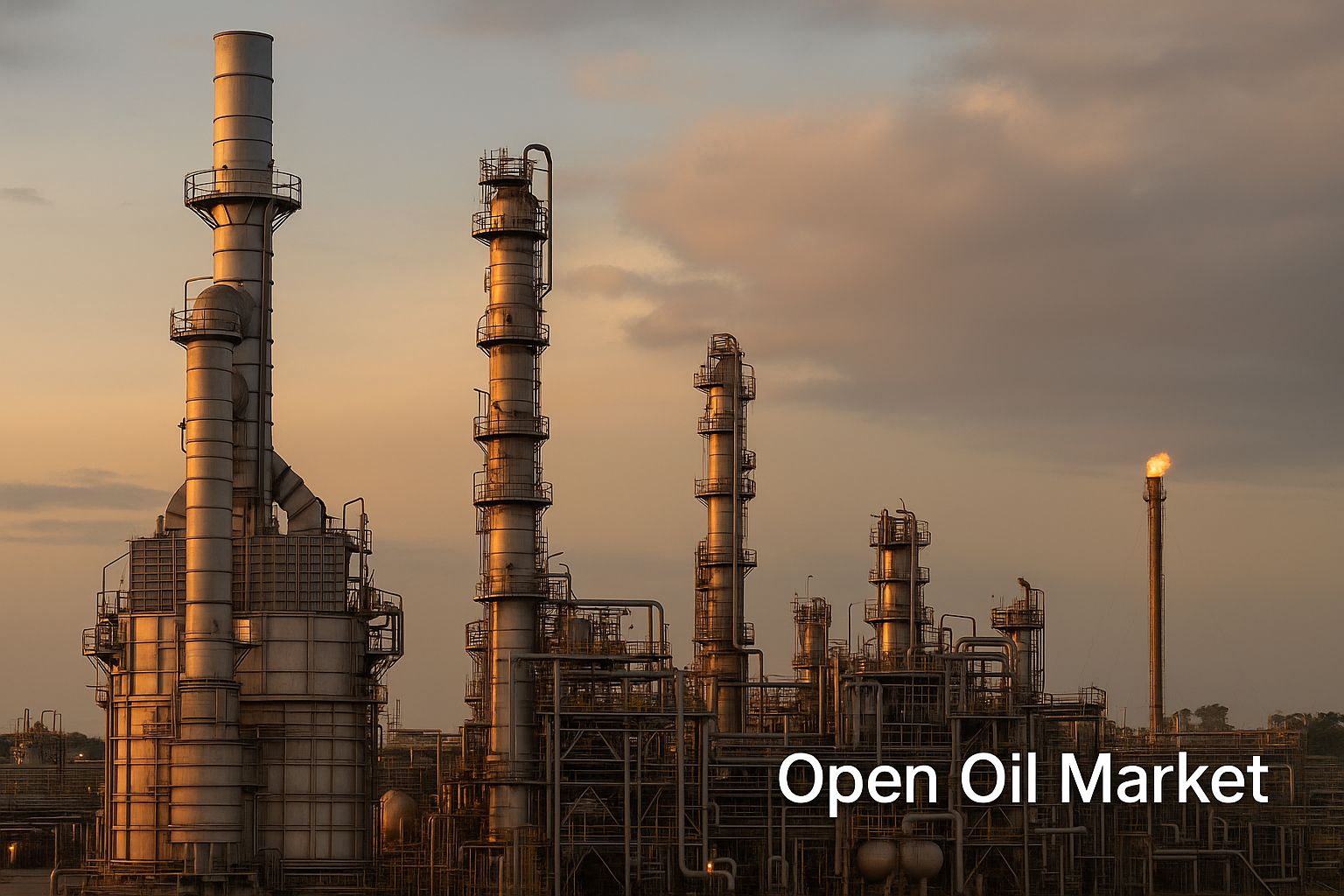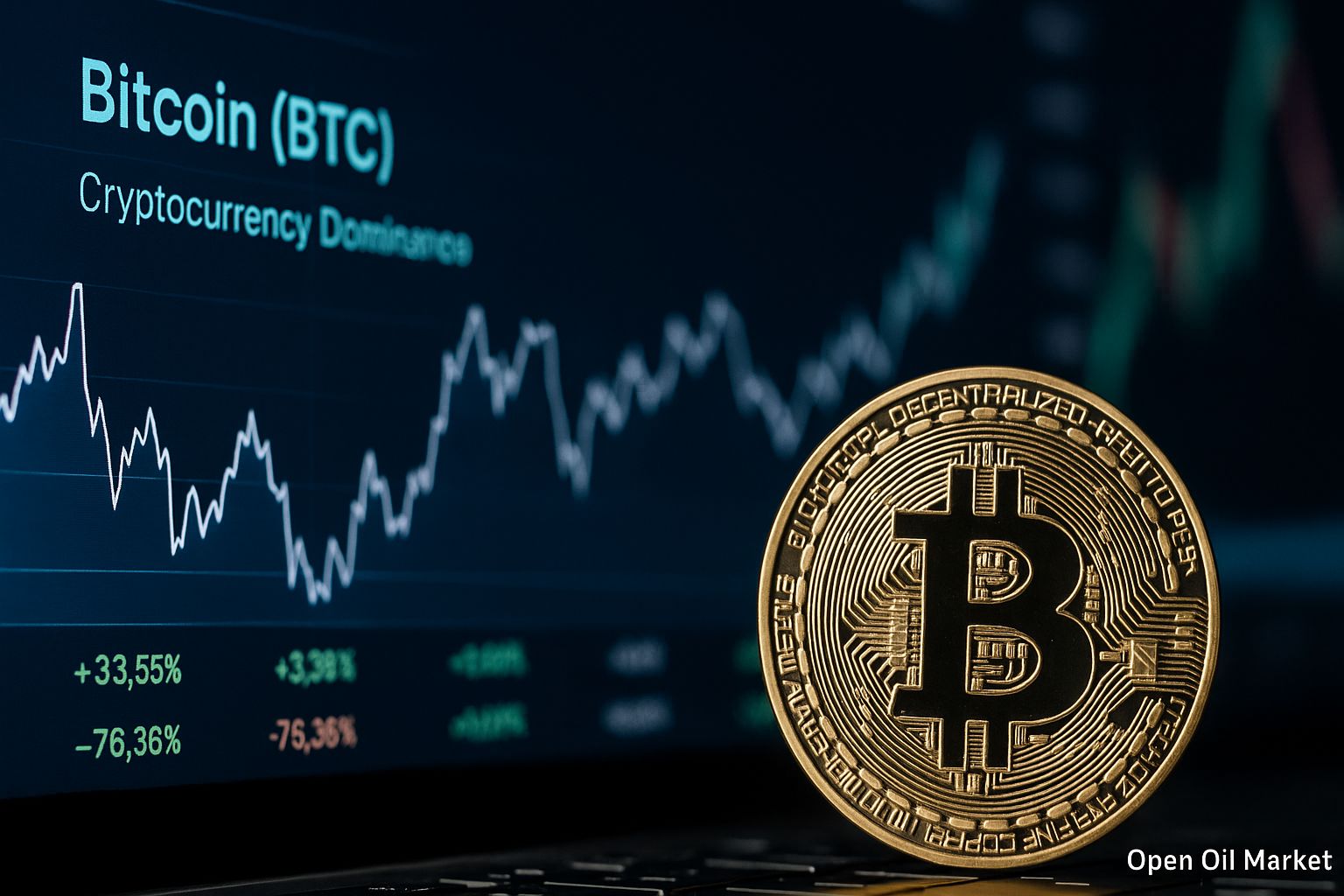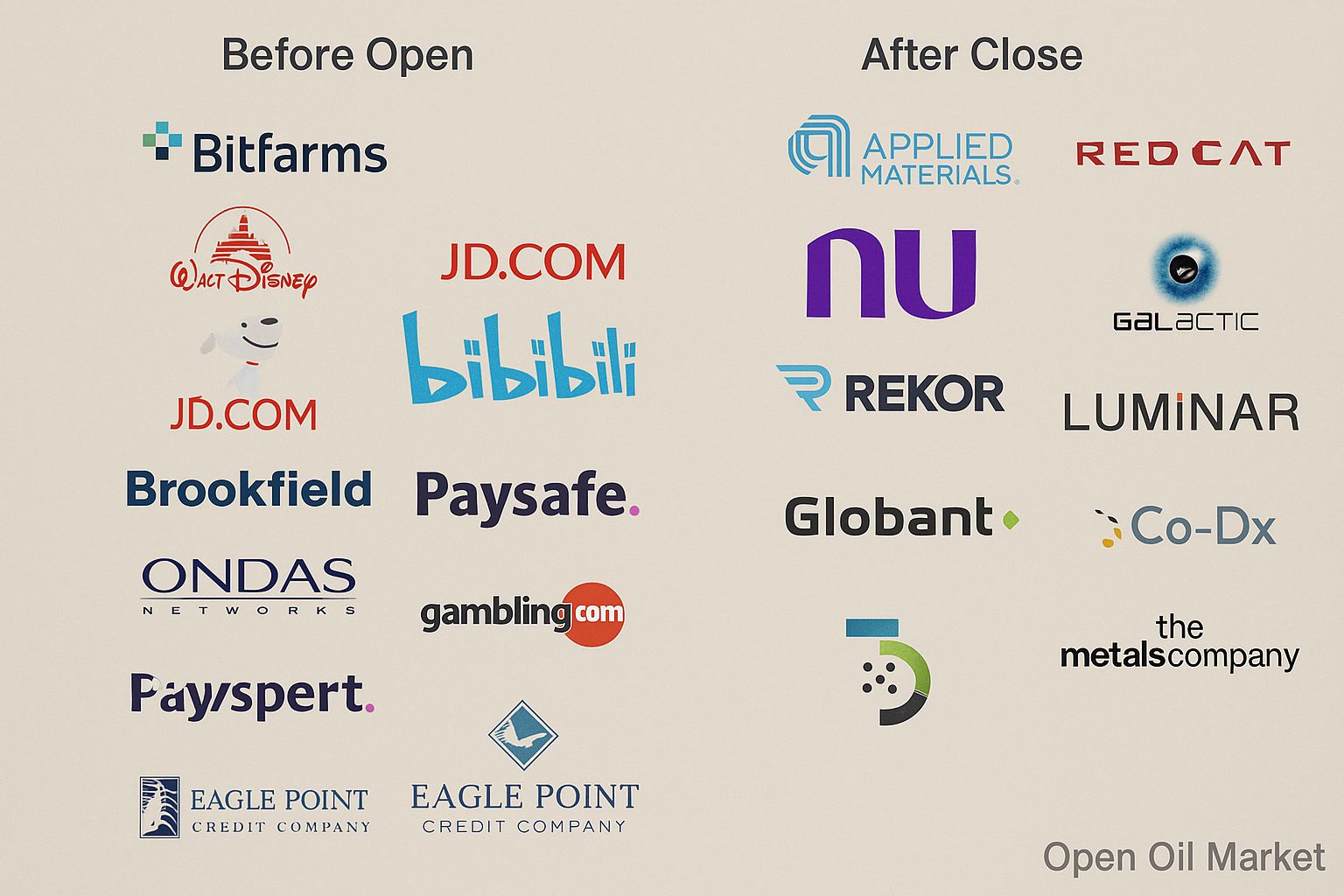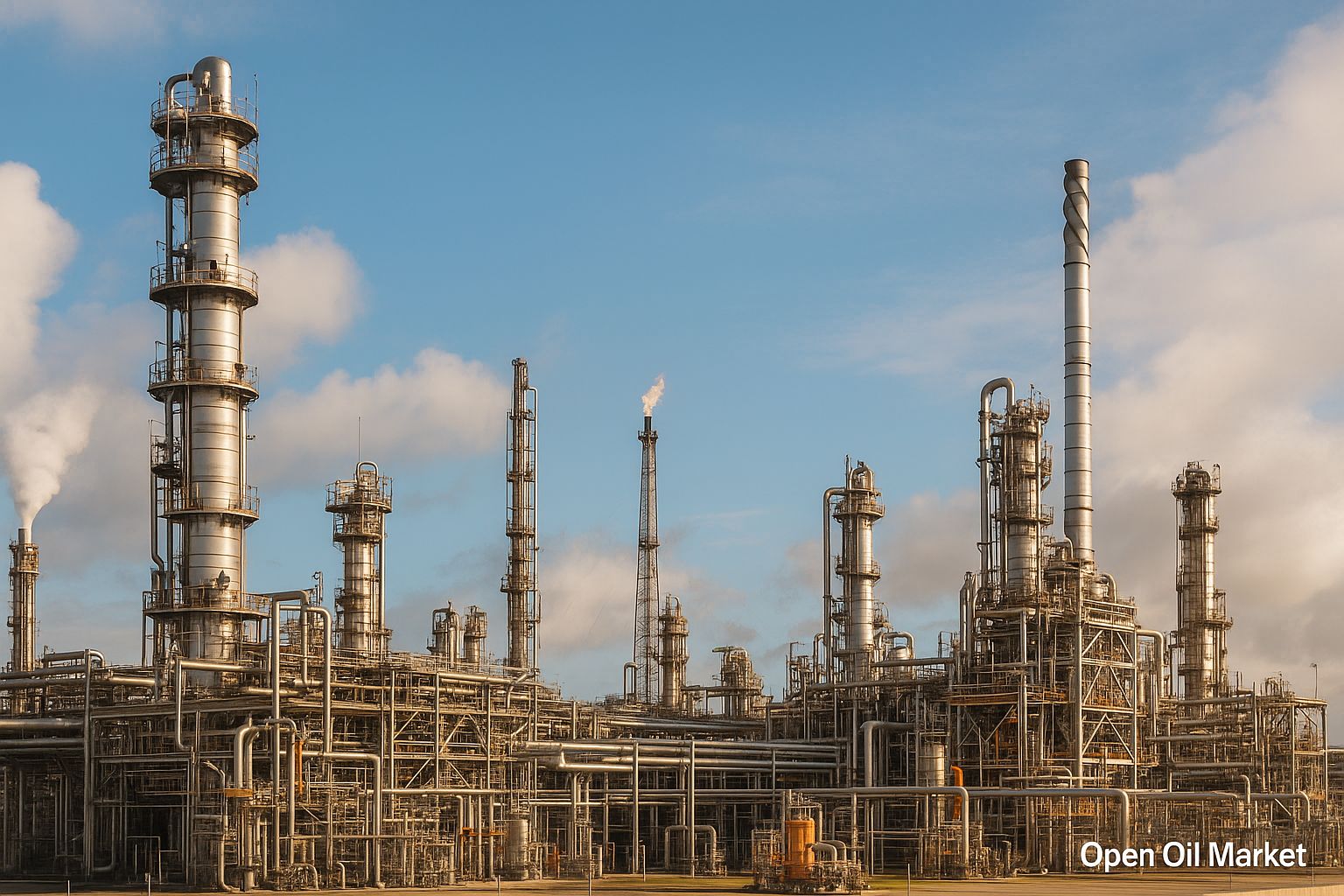
Global and Russian Energy Sector News as of 25th October 2025: New Sanctions, Oil Price Recovery, Record Gas Reserves, Investment Boom in Renewable Energy, and Stabilisation of the Russian Fuel Market
Current events in the fuel and energy complex (FEC) as of 25th October 2025 unfold amid heightened geopolitical tensions and relative stability in raw material markets. Western countries have undertaken new sanctions against the Russian oil and gas sector, which have temporarily shaken the oil market: Brent prices have rebounded from recent lows. At the same time, the gas market is entering winter with record reserves in Europe and moderate prices, providing a comfortable environment for consumers. The global energy transition continues to accelerate—investments in renewable energy are reaching record levels, although traditional resources (oil, gas, coal) still play a key role in the world energy balance. In Russia, emergency measures by the government and companies aimed at stabilising the domestic fuel market are beginning to yield results: the acute shortage of gasoline has lessened, wholesale prices have retreated from their peaks, though full normalisation of supply will still require further efforts. Below is a detailed overview of key sectors in the industry—oil, gas, electricity, renewable energy, the coal market, and the situation on the domestic oil products market.
Oil Market: Sanction Pressures, Supply Increases, and Price Recovery
Global oil prices at the end of October remain in a moderately low range despite a recent short-term uptick. The North Sea Brent benchmark has risen to $64–66 per barrel (up from a multi-month low of around $61 earlier in October), while American WTI is trading near $60. These levels are still 10–15% below the prices at the beginning of the year, reflecting the impact of fundamental factors. The market continues to experience pressure from oversupply and slowing demand, although political risks occasionally introduce volatility. Overall, the balance of forces can be summarised as follows:
- Oversupply and Weak Demand. The OPEC+ alliance continues to gradually increase production, aiming to regain lost market share. At a meeting on 5th October, participants confirmed a collective quota increase from November of approximately 130,000 barrels per day. Concurrently, major producers outside OPEC—namely the USA and Brazil—are ramping up production, achieving record levels close to 13.5 million barrels per day combined. However, global oil consumption growth has significantly slowed—according to the updated IEA forecast, demand in 2025 is projected to rise by just ~0.7 million barrels per day (compared to over 2 million in 2023). Economic slowdowns in Europe and China, alongside the effect of previously high prices that incentivised energy conservation, are restricting consumption growth. As a result, commercial oil inventories are increasing and exerting downward pressure on prices.
- New Sanctions and Geopolitical Risks. Increased sanctions pressure creates additional uncertainty for oil companies and investors. At the end of October, the European Union approved its 19th sanctions package, aimed at reducing Russia’s oil and gas revenues: notably, a ban on the import of Russian LNG will come into effect in 2027, restrictions on “Rosneft,” “Lukoil,” and dozens of affiliated entities have been tightened, and steps are being outlined to mitigate circumvention schemes through a “shadow fleet” of tankers. Simultaneously, the Biden administration has enacted direct sanctions against major Russian oil and gas companies and their subsidiaries, freezing assets and limiting operations. Washington has urged allies to completely cease imports of Russian energy resources, signalling a readiness to intensify measures if necessary. In addition to sanctions, military risks persist: drone attacks on oil infrastructure are ongoing. In recent weeks, strikes have been recorded against FEC facilities within Russia, temporarily incapacitating specific refineries. In response, Russian authorities have even postponed scheduled maintenance at oil refineries to support maximum fuel output for domestic needs. Collectively, sanctions and conflict-related factors escalate volatility: any new intensification or unforeseen developments could reduce market supply and trigger price spikes.
- Restructuring Flows: India, China, and Market Dynamics. Major Asian importers of Russian oil are signalling a reevaluation of their strategies. Under Western pressure, India has agreed to gradually decrease its purchases of Russian oil—according to the White House, import volumes have already been reduced by about half. The large Indian company Reliance Industries has announced that it will comply with sanctions and is renegotiating contracts with suppliers from Russia that are subject to restrictions. Reports indicate that China has also begun to slightly reduce imports of Russian barrels, fearing the sanction implications for its traders. The loss of the Indian market is particularly sensitive for Moscow: India accounted for up to a third of Russia's oil export volumes. Should Indian refineries continue to reduce purchases, Russian oil companies will either need to resort to price dumping and seek new buyers (increasing discounts in favour of China, Turkey, Africa, etc.), or cut production. On one hand, this will intensify pressure on Russia’s oil and gas revenues and its entire FEC. On the other hand, the global market can generally recalibrate without experiencing shortages: any volumes lost from Russia can be offset by suppliers from the Middle East, Africa, and the Americas, redirecting trade flows. News of India's potential “turnaround” towards reducing imports temporarily bolstered oil prices—market participants speculated that Russia would have to lessen exports, thereby limiting global supply. Analysts estimate that the benchmark near $60 per barrel for Brent currently acts as a kind of “floor” for prices: the fundamental surplus prevents oil prices from rising sharply, but geopolitical risks from flow redistribution do not allow quotes to fall significantly below this level.
Therefore, the oil market continues to balance between pressures from oversupply and political factors. While the surplus keeps prices relatively low, heightened sanctions and changes in supply routes (such as the reduction in Indian imports) are preventing quotes from collapsing. Companies and investors are acting cautiously, considering the probability of new upheavals—from further tightening of sanctions to unforeseen disruptions. The baseline scenario for the coming months anticipates prices to hover in the range of $55–65 per barrel, assuming that current OPEC+ policies and moderate demand continue.
Natural Gas: Comfortable Reserves in Europe and Eastern Export Orientation
The gas market situation is favourable for consumers. The European Union approaches the start of winter with unprecedentedly high fuel reserves: underground gas storage (UGS) facilities are, on average, nearly 97% full, which is significantly higher than last year’s levels. Timely injections during the summer months and mild autumn weather have allowed for the accumulation of necessary reserves without emergency procurement at high prices. Consequently, wholesale gas prices in the EU remain comparatively low: TTF hub quotes have stabilised around €30–33/MWh (approximately $370–410 per thousand cubic metres), several times lower than the peaks of autumn 2022. The risk of a repeat of last year’s gas crisis has markedly decreased, although much still depends on forthcoming winter weather and the uninterrupted operation of the global LNG supply chain.
- Europe Prepared for Winter. Record reserves in UGS provide a substantial buffer against cold weather. According to Gas Infrastructure Europe, the current volume of gas in European storage facilities exceeds last year's level by 5–7%. Even in the event of abnormal frosts, a significant portion of demand can be met from accumulated reserves, reducing the likelihood of shortages. The industry and energy sectors in Europe are currently displaying restrained demand for gas: the EU economy is growing slowly, and additionally, high renewable energy output in autumn has reduced the use of gas-fired power plants. This eases the pressure on the gas market.
- Record LNG Imports. European consumers continue to actively purchase liquefied natural gas on the global market. Reduced demand for LNG in Asia has freed up additional volumes for the EU, and suppliers from the USA, Qatar, Australia, and other countries have fully utilised export capacity. LNG imports effectively compensate for the cessation of pipeline gas supplies from Russia, whilst also covering declines in production at North Sea fields. This diversification of sources keeps the market balanced and prevents sharp price spikes.
- Turn Eastward. Russia, having lost its European gas market, is strengthening its focus on eastern exports. Gas flows through the Power of Siberia pipeline to China in 2025 have reached record levels close to its design capacity (around 22 billion cubic metres per year). Concurrently, Moscow is promoting the Power of Siberia 2 project through Mongolia: its launch by the end of the decade is expected to partially compensate for lost export volumes to Europe. Additionally, the export of Russian LNG to Asia is gaining momentum—thanks to the commissioning of new lines in Yamal and Sakhalin, LNG shipments directed to China, India, Bangladesh, and other countries willing to purchase fuel on attractive terms have increased. While the total gas export from Russia remains below pre-sanction levels, the eastern pivot allows for the maintenance of extraction project loads. The priority for Gazprom and other companies now is fulfilling domestic obligations and long-term contracts in Asia and the CIS.
The overall picture in the gas sector is thus: Europe confidently enters the heating season with a solid “safety cushion,” and the global market as a whole is balanced. Unless extreme weather surprises or unexpected disruptions in LNG supply chains occur, gas prices are likely to remain relatively moderate, which is beneficial for the industrial and energy sectors. For Russia, the adjustment of export routes towards Asia has become strategically important—investors are closely monitoring negotiations regarding new pipelines and the implementation of LNG projects, assessing long-term prospects for gas exports in the context of sanctions.
Electricity: Record Consumption and Infrastructure Modernisation
The global electricity sector is experiencing unprecedented demand growth, presenting new challenges for energy systems. In 2025, global electricity consumption is projected to reach an all-time high—estimates suggest total generation will exceed 30,000 TWh per year. This growth is driven by economic development, digitisation, and the widespread adoption of electric transportation, which increases the load on networks across all regions. The largest economies are making the biggest contributions to this new record: the USA is expected to generate around 4.1 trillion kWh (a national record), while China is projected to produce over 8.5 trillion kWh per year. Consumption is rapidly increasing in developing countries in Asia, Africa, and the Middle East, where industrialisation and population growth are driving increased electricity demand. Such dynamic increases in load require proactive energy investments to prevent capacity shortages and supply disruptions.
- Infrastructure Modernisation and Expansion. Rising flows and peak loads are forcing countries to urgently update their electricity infrastructure. Several nations are implementing large-scale programmes to strengthen and develop their electricity grids, as well as to construct new generating capacities. In the USA, energy companies are investing billions of dollars in upgrading distribution networks and building additional lines—demand is rising due to the connection of data centres, electric vehicle charging stations, and other energy-intensive facilities. Similar efforts are underway in the EU, China, India, and other major economies. At the same time, the importance of “smart” grids and energy storage is growing: large battery farms and pumped-storage power plants help smooth consumption peaks and integrate variable renewable energy generation. Without network modernisation, energy companies will find it challenging to reliably meet the record demand of upcoming decades.
- Ensuring Reliability. Despite the colossal pressures, the electricity sector is exhibiting resilience: generation and networks are currently managing to supply the economy with energy. However, maintaining reliable electricity supply requires continuous capital investments. Governments of many countries view energy as a strategic sector and are increasing funding even amid budget constraints. For example, in Europe, alongside investments in renewables and energy storage, attention is being paid to backup capacities and intersystem connections between countries, to safeguard against peaks or declines in generation. Overall, the stable operation of electrical grids has become a priority since disruptions in energy supply can lead to severe economic losses. Therefore, maintaining a balance between growing demand and infrastructure development is the primary challenge for the industry in the coming years.
Thus, the global electricity sector enters a new era—an era of record demand and technological modernisation. Without significant investments in networks, generation (including new nuclear power plants and flexible gas stations to cover peaks), and storage systems, ensuring the uninterrupted operation of energy systems will be challenging. For energy investors, this signifies both new opportunities (infrastructure upgrade projects, "green" technologies) and risks associated with the necessity for significant capital expenditures and potential regulatory changes in the sector.
Renewable Energy: Investment Boom, Government Support, and Growth Challenges
The renewable energy sector (RES) in 2025 continues to expand, solidifying the long-term "green" trend. By the end of the third quarter, investments in solar and wind generation have reached record levels—total investments exceed the level of the same period last year by more than 10%. Funds are directed towards the accelerated construction of solar parks, wind farms, and related infrastructure—energy storage systems, hydrogen projects, and smart grid platforms. The rapid commissioning of new capacities is driving an increase in the generation of clean electricity without increasing CO2 emissions. Many countries are reaching new records in RES generation, yet such rapid growth is accompanied by several challenges for the industry. Key trends and issues can be summarised as follows:
- Record Generation and RES Share. Renewable sources are taking an increasingly significant role in the global energy balance. Preliminary estimates suggest that in 2025, around 30% of all electricity generated worldwide will come from solar, wind, hydro, and other RES installations. In the European Union, the share of clean energy has exceeded 45% due to active climate policies and the phase-out of coal generation. China is nearing the 30% mark for generation from RES, despite the massive scale of its electricity sector and the ongoing construction of modern coal-fired power plants. For the first time in history, the total volume of electricity produced from solar and wind globally has surpassed generation from coal—this symbolic milestone demonstrates the irreversibility of the energy transition. These achievements confirm that "green" energy has become an integral part of global energy supply.
- Government Support and Incentives. Governments of leading economies are bolstering support for RES, viewing it as a driver of sustainable development. In Europe, even more ambitious climate targets are being introduced, necessitating the accelerated deployment of zero-carbon capacities and the reform of emissions markets. In the USA, large subsidy and tax incentive programs for clean energy projects and related sectors are ongoing (as part of the Inflation Reduction Act). Countries in Asia, the Middle East, and Latin America are also increasing investments: Gulf states are building some of the largest solar and wind stations in the world, while Russia, Kazakhstan, and Uzbekistan are conducting auctions to select new RES projects with government participation. Such policies reduce industry costs and attract private capital, accelerating the transition to clean energy.
- Growth Challenges. The rapid development of "green" energy is accompanied by certain difficulties. Increased demand for equipment and raw materials has led to rising prices for components: in 2024–2025, high prices for polysilicon (a key material for solar panels) and rare earth elements for wind turbines have been observed. Energy systems face the challenge of integrating variable generation—significant storage capacity and backup power plants are required for network balancing, particularly during peak consumption or reductions in RES output. Additionally, the sector is experiencing a lack of skilled personnel and limited transmission capacity in certain regions, further delaying the commissioning of new projects. Regulators and companies will need to address these issues to maintain high rates of energy transition without compromising supply reliability.
Overall, renewable energy has become one of the most dynamic segments of the global FEC, attracting record volumes of investment. As technology continues to decline in cost, the share of RES in energy production will steadily grow. New technological breakthroughs—such as improvements in storage batteries or advancements in hydrogen energy—open additional possibilities for the sector. For investors, the "green" sector remains one of the most promising; however, the successful implementation of projects requires consideration of market risks (price fluctuations for materials, changes in support policies, infrastructure limitations). Nevertheless, the long-term trajectory remains positive: sustainable development of RES is a key part of global energy strategy for decades ahead.
Coal Market: High Demand in Asia and Gradual Coal Phase-Out
The global coal market in 2025 exhibits mixed trends. On one hand, high demand for coal fuel in Asia supports production and prices. On the other hand, many countries are systematically transitioning to reduce coal use for environmental reasons. In the largest Asian economies—China, India, Japan, and South Korea—coal continues to play a key role in the energy balance and industry. In the summer months of 2025, coal consumption in Asia rose again: for instance, in August, total imports of thermal coal by China, Japan, and South Korea increased by almost 20% compared to July. Reasons include rising electricity demand during an abnormally hot period and temporary production cuts at some fields. In China, intensified safety and environmental checks at mines have led to the suspension of operations at several coal enterprises, forcing energy companies to compensate for volumes through imports. Thus, the Asian market continues to consume large volumes of coal, mitigating the impact of the global energy transition.
- Asian Demand Supports the Industry. For many developing countries, coal remains one of the most affordable and reliable energy sources. Despite efforts to diversify, China, India, and other economies are not yet ready to completely phase out coal, given the needs of their energy systems. Coal-fired power plants provide base generation and meet peak loads, especially when RES generation is insufficient. High demand in Asia keeps global coal prices at acceptable levels for producers. The coal sector in the region is even investing in efficiency and environmental improvements: new power plants with cleaner combustion technologies are being constructed, and emission control systems are being implemented. These measures are aimed at prolonging the life cycle of coal generation while alternative capacities reach sufficient scale.
- Transitioning Away from Coal. Concurrently, developed economies and international institutions adhere to a long-term strategy of phasing out coal-fired energy. In the countries of the European Union, the UK, Canada, and the USA, there is a systematic closure of coal-fired power plants. Goals have been set to completely eliminate coal from electricity generation or minimize its share by 2030–2040. Financing of new coal projects is becoming increasingly difficult—major banks and investment funds are refusing to lend to the coal industry, considering climate risks and public pressure. Even in countries reliant on coal, governmental energy development plans increasingly include provisions for the phasing out of new coal capacities. Thus, the global trend is towards the gradual reduction of coal’s role: as RES and storage systems become more affordable, the economic advantages of coal generation will wane. It is expected that over the next 10–15 years, global coal consumption will begin to sustainably decline.
As a result, the coal segment stands at a crossroads. For now, demand in Asia enables the sector to sustain significant production volumes and investment to support existing capacities. However, in the long term, the era of coal is nearing its twilight—a growing number of countries and companies are declaring commitment to low-carbon energy. For energy markets, this signals the ongoing role of coal during the transitional period, but without new growth drivers. For investors, it is important to note that investments in coal projects carry increased risks and gradually lose support from both policy and the financial sector.
The Russian Fuel Market: Price Stabilisation, Extended Bans, and Supply Control
In the domestic oil products market in Russia, a gradual normalisation is observed as of autumn 2025 following the crisis surge in prices at the end of summer. A complex of emergency measures taken by the government in cooperation with oil companies has begun to yield results. Wholesale market prices for gasoline and diesel fuel have retreated from their record highs in September, gradually moving closer to levels seen at the beginning of the year. Consequently, the mass shortage of fuel at petrol stations, evident in some regions in August–September, has diminished. Nevertheless, the situation still requires close attention from authorities and market participants, especially in remote federal subjects.
- Extension of Export Restrictions. To saturate the domestic market, the government has extended strict restrictions on motor fuel exports. The complete ban on the export of automotive gasoline, first introduced at the end of July, has been prolonged several times and is now effective at least until 31st December 2025. Similar measures apply to diesel and marine fuel: their export is permitted only to large producers under special quotas, and trading through intermediaries is effectively blocked. These steps aim to direct the maximum volume of oil products to the domestic market and quell price surges. While the restrictions are temporary, the government has indicated that they will remain in place until prices and supplies of fuel in the country stabilise completely.
- Price Stabilisation and Supply. Thanks to these restrictions and other intervention measures, the increase in prices for gasoline and diesel within the country has been halted. According to exchange trading data, the wholesale price for popular gasoline "Regular-92" returned to below 70,000 roubles per tonne in the latter half of October after reaching record highs of 73–74,000 roubles in late September. Prices for "Premium-95" and diesel fuel have also decreased from peak levels. Petrol stations across most regions have resumed normal operations, and queues for gasoline have diminished. Authorities in certain subjects (e.g., Crimea) report improvements in supply situations: disruptions caused by reduced refinery processing and logistics challenges have largely been rectified by the end of October. The government, alongside fuel companies, is continuously monitoring the market to quickly respond to local disruptions.
- Maintaining Production and Market Control. Under sanctions and domestic demand, maintaining high capacity utilisation of Russian refineries has become a priority. Major refineries have postponed some scheduled maintenance work to boost gasoline and diesel production during the peak autumn season. Additionally, authorities have increased subsidies (damper payments) to oil companies, compensating them for the difference between export and domestic prices—this encourages shipments to the domestic market. The Federal Antimonopoly Service and relevant ministries have tightened control over prices and fuel supplies by region, eliminating cases of speculation and re-export. All these efforts aim to prevent a recurrence of the fuel crisis. As a result, the situation has been relatively balanced: retail prices at petrol stations have stopped rising, and supplies of gasoline and diesel at oil depots are adequate to meet current demand.
In essence, the Russian fuel market has managed to navigate past the peak of tensions through stringent but necessary measures. In the short term, export restrictions and government control will remain key tools for ensuring internal stability. Investors and participants in the FEC will closely monitor further government actions—such as the conditions for a gradual lifting of bans or the introduction of long-term support mechanisms for refining. At a strategic level, authorities are also discussing increasing fuel reserves and modernising refineries to bolster the country's energy security. Combined with the adaptation to sanction conditions, these measures should ensure the resilience of the Russian oil products market and price predictability for consumers.




